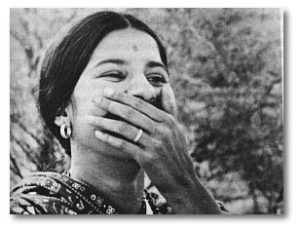Born in 1923 in Faridpur in what is now Bangladesh, Sen studied science in Calcutta before he joined the Communist Party of India. At this time he read voraciously on films and aesthetics and reviewed films. His early films were heavily influenced by Marxist ideals and his second film, Neel Akasher Neechay (Under the Blue Sky, 1958) was banned by the government for two months. His films then experimented with themes of marriage in an urban middle-class milieu. These films include BaisheyShravana (A Wedding Day, 1960), a tender love story that ends in a famine, and Punascha (Over Again, 1962), which explored the problems that arose in the Indian household when the wife went to work. In 1956 he made Akash Kusum (The Daydream), which sparked a lively debate in a national daily with Ashish Barman and Satyajit Ray. The daily grind of living in Calcutta and its social, economic and political unrest prompted Sen to make the Calcutta trilogy: Interview (1970), Calcutta 71 (1972), and Patalik (1973).
With his films Ek Din Pratidin (1979) and Kharij (The Case is Shut), Sen entered the most creative phase of his career. In Ek Din Pratidin, Sen explores the trauma induced in a middle-class Bengali home when the working daughter fails to return home on time; in Kharij, he explores the anxieties created by the accidental death of a servant from gas poisoning while he slept in the kitchen. These films are masterful explorations of the middle-class morality, the stucture of everyday life and its oppressions, the mentalite (as the French would say) of domesticity, and the urban setting of Calcutta. By the early eighties, Sen, who had now become a national figure, was beginning to show a different comtemplative side, and his films also become reflections on film-making. Akaler Sandhaney (In search of famine, 1980) is a story about a film crew that descends on a small village to recreate the conditions of the 1943 famine in Bengal. The reality they see raises disturbing questions. Khandhar (The ruins, 1983) is another movie that subtly explores guilt in class relations.
Unlike Satyajit Ray, his great contemporary with whom he is often compared, Mrinal Sen did not restrict himself to Bengali films. He made in Oriya and Telugu, as well as in Hindi. His film Bhuvan Shome, with its austere style, sardonic humor, and expressionist exploration of the politics of class, is a landmark in modern Indian cinema, and became highly influential for what used to be called the ‘New Indian Cinema’. Sen’s work itself shows a fusion of myriad influences ranging from Bresson to Premchand. Sen has remained active in left-wing politics, and among some in the Indian intelligentsia his work has received more accolades than the work of Satyajit Ray, who was often charged with being apolitical.
Sources
Rajadhyaksha, Ashish; Willemen, Paul. Encyclopedia of Indian Cinema. London: British Film Institute; New Delhi: Oxford University Press, 1994
Vasudev, Aruna. The New Indian Cinema. New Delhi: Macmillan, 1986
Kishore, Valicha. The Moving Image. Hyderabad: Orient Longman, 1988
Brief Filmography
Neel Akasher Neechey (1958)
Akash Kusum (1965)
Bhuvan Shome (1969)
Interview (1970)
Calcutta ’71 (1972)
Ek Din Pratidin (1979)
Akaler Sandhaney (1980)
Ek Din Achanak (1988)


